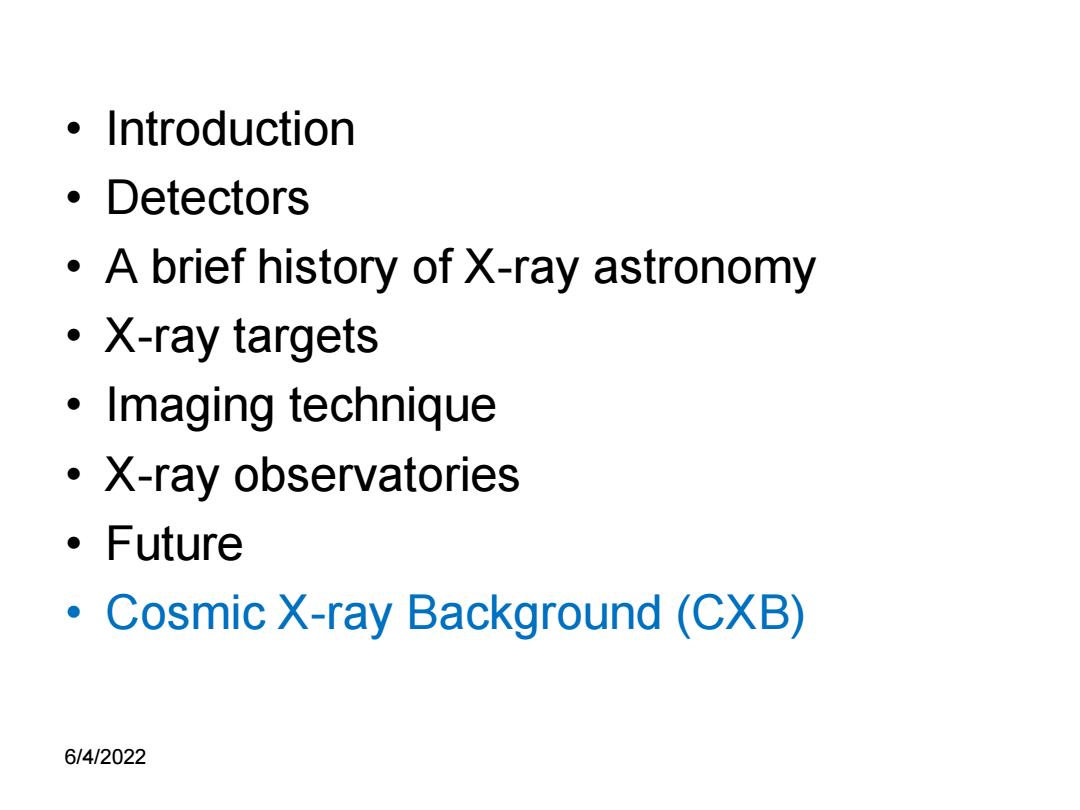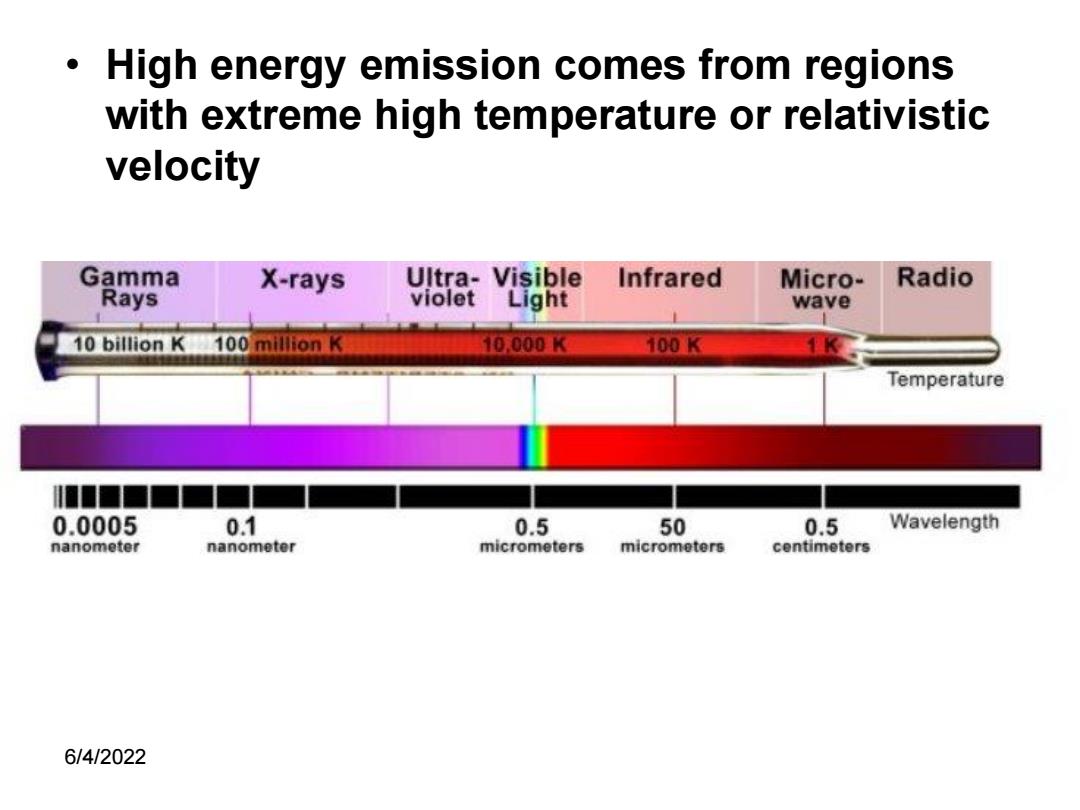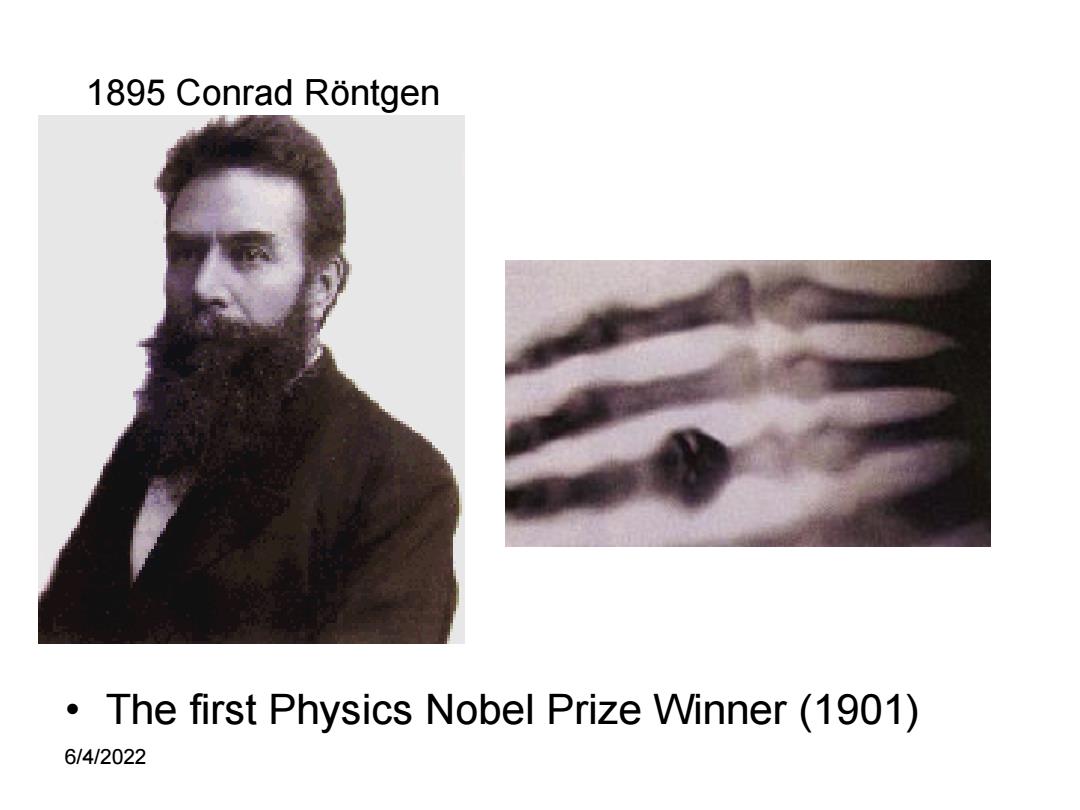
X射线天文观测 王俊贤 中国科技大学天体物理中心 6/4/2022
X射线天文观测 王俊贤 中国科技大学天体物理中心 6/4/2022

·Introduction ·Detectors A brief history of X-ray astronomy ·X-ray targets ·Imaging technique ·X-ray observatories ·Future Cosmic X-ray Background(CXB) 6/4/2022
• Introduction • Detectors • A brief history of X-ray astronomy • X-ray targets • Imaging technique • X-ray observatories • Future • Cosmic X-ray Background (CXB) 6/4/2022

High energy emission comes from regions with extreme high temperature or relativistic velocity Gamma X-rays Ultra-Visible Infrared Micro- Radio Rays violet Light wave 10 billion K 100 million K 10.000K 100K Temperature 0.0005 0.1 0.5 50 0.5 Wavelength nanometer nanometer micrometers micrometers centimeters 6/4/2022
• High energy emission comes from regions with extreme high temperature or relativistic velocity 6/4/2022

0.1 keV 1.0 keV 10.0 keV 100 keV 1 MeV "Soft" "Hard" Soft gamma-rays Photon energy unit kev Convert photon energy to wavelength 1keV=1.6x109erg=hclλ,λ=12.4A the ionization potential of hydrogen:13.6 ev or 912A ·Temperature 1 keV~1.16 x 107K (hv =kT) Doppler shift a UV photon at 1240A to 1keV require a speed of 0.9998c 6/4/2022
• Photon energy unit – keV • Convert photon energy to wavelength 1 keV = 1.6 x 10-9 erg = hc/λ, λ=12.4Å the ionization potential of hydrogen: 13.6 eV or 912Å • Temperature 1 keV ~ 1.16 x 107K (hν = kT) • Doppler shift a UV photon at 1240Å to 1keV require a speed of 0.9998c 6/4/2022

1895 Conrad Rontgen The first Physics Nobel Prize Winner(1901) 6/4/2022
1895 Conrad Röntgen • The first Physics Nobel Prize Winner (1901) 6/4/2022